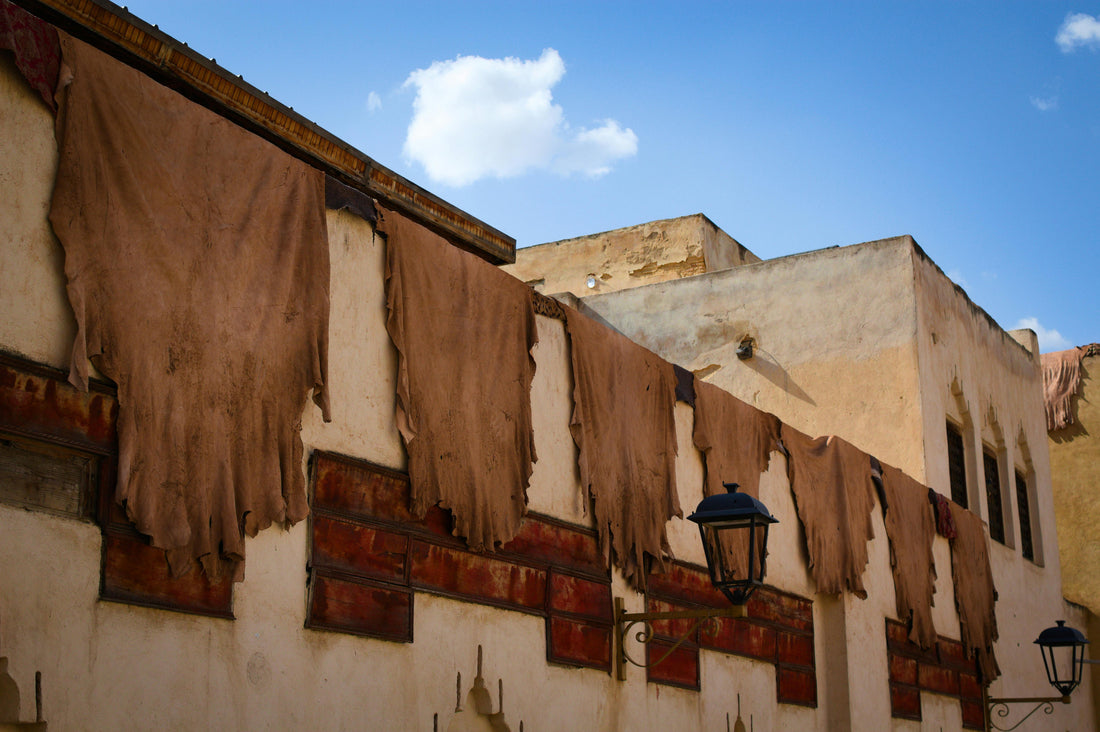
Real Leather vs Vegan Leather
It’s a hot debate in the leather industry - traditional leather or vegan leather? There are pros and cons to both which we have tried to explore below.
Vegan Leather
Pros
In recent years we have seen an increasing number of companies bring vegan leather into their ranges as the rise of vegan culture has become more mainstream. The most obvious pro to vegan leather is that no animals were harmed in the creation of the product. Perfect for those who live a vegan lifestyle. Vegan leather is often made from plastic, making it nearly 100% waterproof and a lot easier to clean and maintain than traditional leather. It also won’t get the same patina that real leather does, meaning your vegan leather item will look the same as it did the day that you bought it. As the product is man made, you can get vegan leather in a huge variety of colours, including glittery ones, something that just isn’t achievable with real leather. Vegan leather in general is often cheaper than real leather, due to it being mass produced.
Cons
The biggest disadvantage to vegan leather we feel is that it is made from plastic (PVC being one of the main types of vegan leather out there) - not good if you are trying to be environmentally conscious. Although there are some new vegan leather products coming to market made from organic material such as fungus, apples and even pineapples, these are not yet mass produced, so it’s much more likely that any vegan leather you are currently purchasing is made from plastic. The production of most vegan leather as it stands now is also pretty bad for the environment. Producing plastic releases toxic carcinogens into the environment which have been proven to cause birth defects and other health issues. Vegan leather has a shorter lifespan than traditional leather and although you can repair it, it’s not as easy to repair as genuine leather. When you do chuck it out, because it’s made of plastic it won’t biodegrade, it will just turn into small plastic pieces sitting in landfill.
Traditional Leather
Pros
The big pro about traditional leather is it is surprisingly sustainable. Leather products have a far longer life than vegan leather and well-made leather goods can often last decades. There is no fast fashion when it comes to leather products, especially in the classic designs made by Berber Leather, designed to go with outfits for years to come. Many leathers are made in a less harmful way than vegan leathers, especially veg-tanned ones, releasing less harmful toxins into the environment than the plastic counterpart. Traditional Leather ages in a beautiful way, as the patina of the product comes through. We have often said about our products that although they look nice now, in a year or two’s time they will look even better! Traditional Leather also has that wonderful leather smell, something that isn’t present in the Vegan alternative.
Cons
The often most quoted disadvantage to traditional leather is that it has come from an animal. Although most leather, ours included, come as by-products from the meat industry, some animals are purely bred for their leather. It’s especially important to know whether your leather has come from, and proper leather merchants will always be happy to discuss the origins of their products. Be wary of leather that especially comes from China as it is often impossible to know if it has been labelled correctly. Other cons to traditional leather is the fact that it takes a lot more care than vegan leather to keep the material looking clean and soft, as it can easily stain if it comes into contact with oils. Some coloured leather can also fade when it comes into contact with direct sunlight.
Ultimately the decision comes down to the individual, there are pros and cons to both sides. If you prefer a product that doesn’t harm any animals then vegan leather is the way forward, but there is the environmental cost that comes with it. We of course believe real leather is the better option but like with any product nowadays we believe research is always important to make an informed decision about the product you are purchasing. If you’d like to read more about things to look for when buying a real leather product we recommend our post on Leather types.
